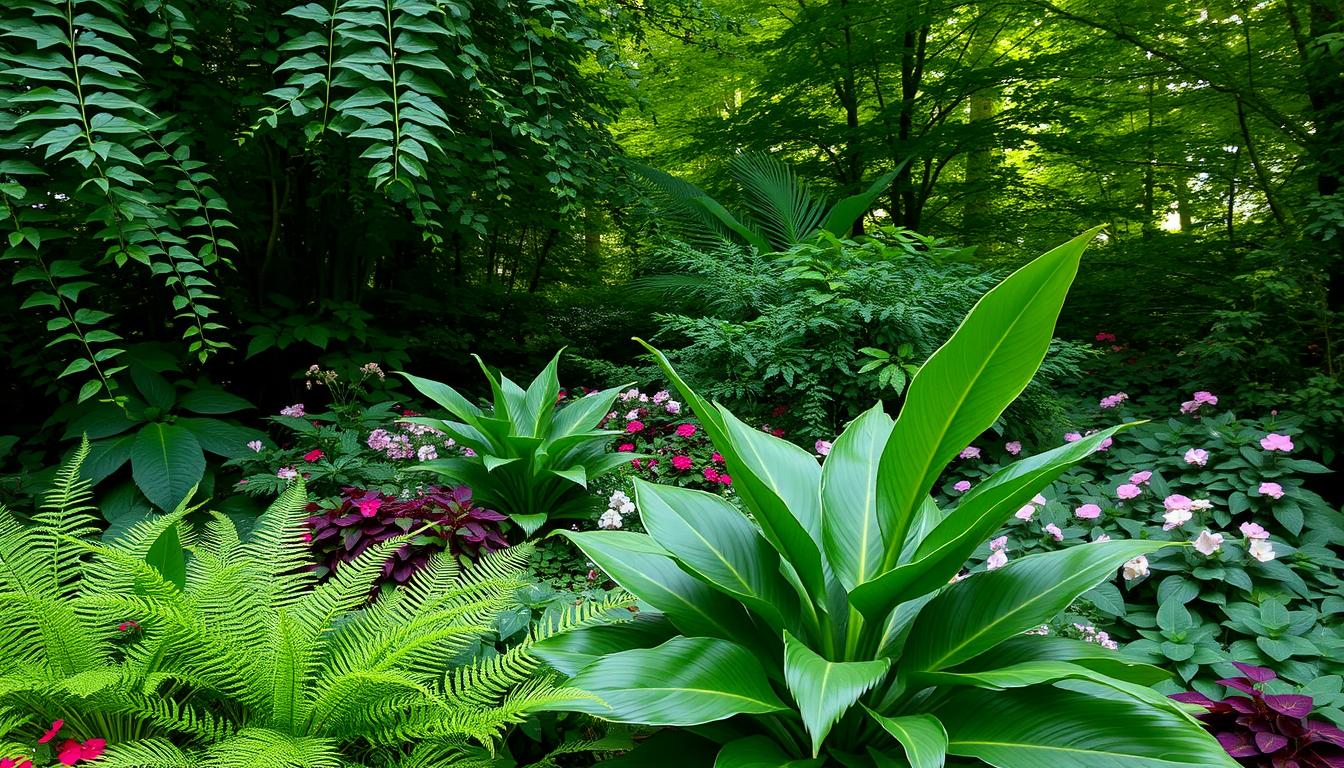Have you ever stood in your garden, feeling a deep sense of satisfaction as you watch life flourish all around you? The joy of nurturing plants that not only survive but thrive through various conditions is truly unparalleled. When it comes to the cast iron plant, known for its resilience and hardiness, pairing it with the right companions can transform your gardening experience. Whether you’re a seasoned gardener or a novice, learning about cast iron plant companion plants opens up a world of possibilities. Imagine creating a harmonious vignette that enhances both beauty and vitality, where these ideal companions for your cast iron plant create an inviting atmosphere in your home or garden.
Key Takeaways
- Understanding cast iron plant companion plants enhances your gardening skills.
- Creating a supportive environment boosts the health of your cast iron plant.
- Choosing ideal companions for the cast iron plant can lead to striking garden aesthetics.
- The right plant pairings improve growth and pest resistance.
- Your gardening journey is enriched through experimentation with companion plants.
What is a Cast Iron Plant?
The cast iron plant, known scientifically as Aspidistra elatior, is a remarkable houseplant celebrated for its resilience and aesthetic appeal. Native to Japan and China, this hardy perennial has become a favorite for both novice and experienced gardeners alike.
Origin and History of the Cast Iron Plant
The history of the cast iron plant dates back to the Victorian era when it was prized for its ability to thrive in low-light settings. This adaptability made it a popular choice for homes and gardens, especially in urban environments. Gardeners admired its toughness, allowing it to flourish even in less-than-ideal conditions.
Unique Features of the Cast Iron Plant
The cast iron plant boasts glossy, dark green leaves that can reach heights of 20 to 30 inches. Beyond its attractive appearance, this plant possesses several unique features:
- Drought Tolerance: The cast iron plant is capable of withstanding periods of drought, making it an excellent option for those who may forget to water their plants regularly.
- Soil Adaptability: It thrives in various soil conditions, from poor to rich, which adds to its appeal for gardeners.
- Longevity: Remarkably, some cast iron plants have been known to live up to 50 years, making them a lasting addition to your plant collection.
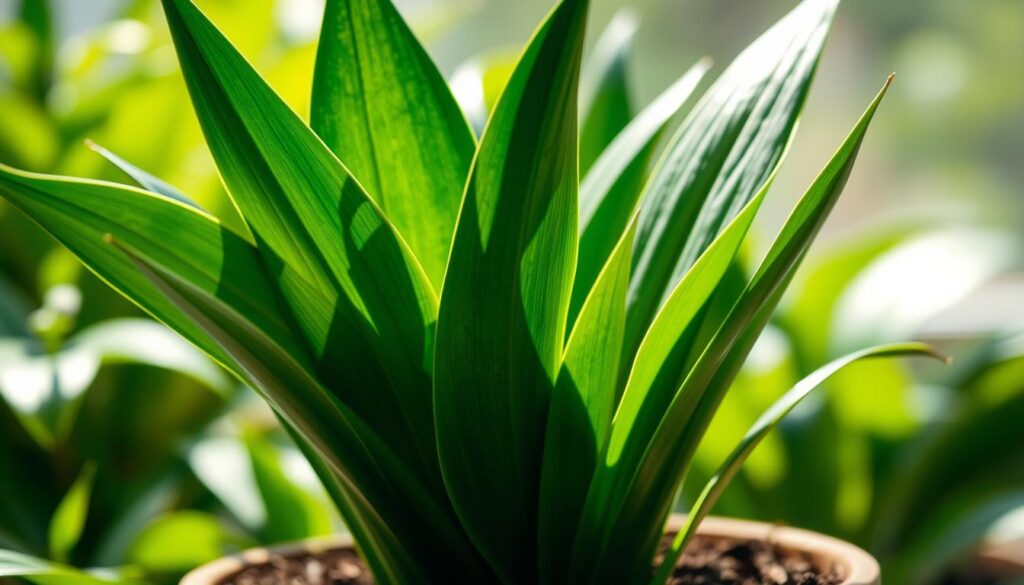
Benefits of Companion Planting
Companion planting presents various advantages that can transform your gardening experience. This method promotes a harmonious relationship between different plant species, yielding improved outcomes. By understanding the benefits of companion planting, you can enhance the health of your garden, deter pests naturally, and create beautiful, cohesive landscapes.
Enhancing Growth and Health
By strategically pairing plants, you can significantly boost their growth rates and overall health. For instance, legumes have the ability to fix nitrogen in the soil, which can be beneficial for heavy feeders like tomatoes and peppers. This symbiotic relationship often leads to increased yields and robust plants, making your gardening efforts more rewarding.
Pest Control Strategies
Integrating certain plants can act as a natural barrier against pests. Marigolds, for example, are well-known for repelling nematodes and aphids. These plants serve as effective companions, reducing the need for chemical pest control methods. You can enjoy a healthier garden environment while safeguarding your plants from common threats.
Improving Aesthetic Appeal
Well-planned companion planting enhances the aesthetic appeal of gardens and promotes visual diversity. For instance, combining contrasting colors and textures allows for stunning visual arrangements that elevate the beauty of your space. With careful design, you can create an inviting landscape that pleases the eye while benefiting desired plants.
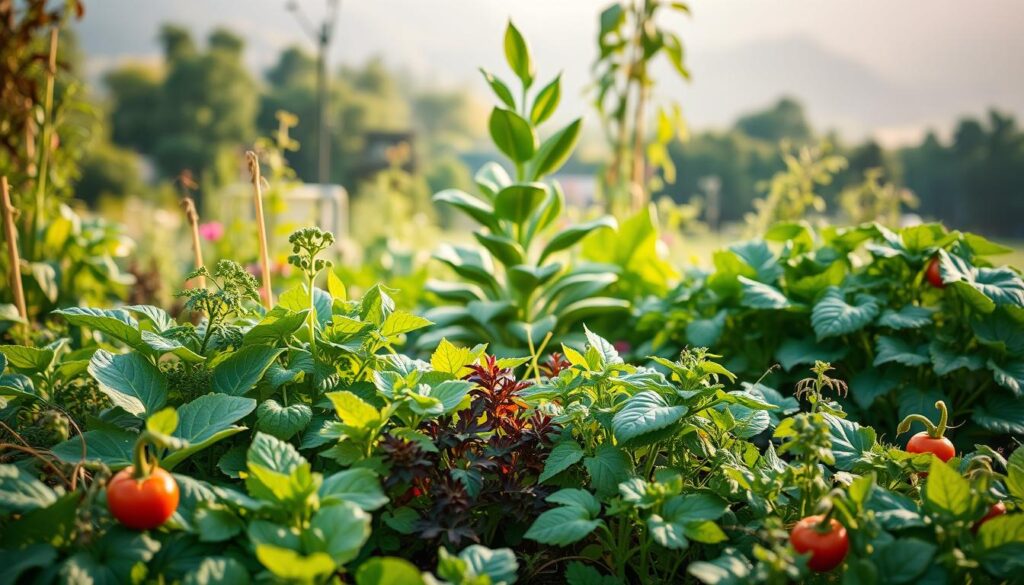
| Benefit | Description |
|---|---|
| Growth Enhancement | Improves overall plant health and yields through beneficial plant partnerships. |
| Pest Control | Reduces pest populations naturally through repelling plants. |
| Aesthetic Appeal | Creates attractive garden layouts with diverse plant varieties and colors. |
Ideal Conditions for Companion Plants
Creating a thriving environment for companion plants involves understanding their specific needs. The ideal conditions for companion plants, such as light exposure, soil composition, and watering practices, play a significant role in their growth. Let’s explore these essential aspects to support both the cast iron plant and its companions.
Light Requirements
Most companion plants for the cast iron plant thrive under indirect light. Direct sunlight can lead to scorching, while too little light inhibits growth. Placing these plants in bright, filtered light helps to ensure they receive the right amount of illumination without compromising their health. Careful consideration of light requirements allows for a harmonious arrangement where each plant can flourish.
Soil Preferences
Understanding the soil preferences for cast iron plants is crucial for successful companion planting. These plants prefer well-draining soil that retains some moisture without becoming waterlogged. A suitable potting mix, often rich in organic matter, provides the necessary nutrients while allowing excess water to escape. Tailoring the soil conditions becomes vital in creating an environment where all plants can succeed together.
Watering Habits
Watering practices should align with the specific needs of each companion plant. Overwatering can lead to root rot, particularly in cast iron plants. It’s best to allow the top layer of soil to dry out before watering again. This practice supports the ideal conditions for companion plants, ensuring they receive necessary hydration without risking deterioration. Monitoring moisture levels maintains the balance essential for thriving greenery.
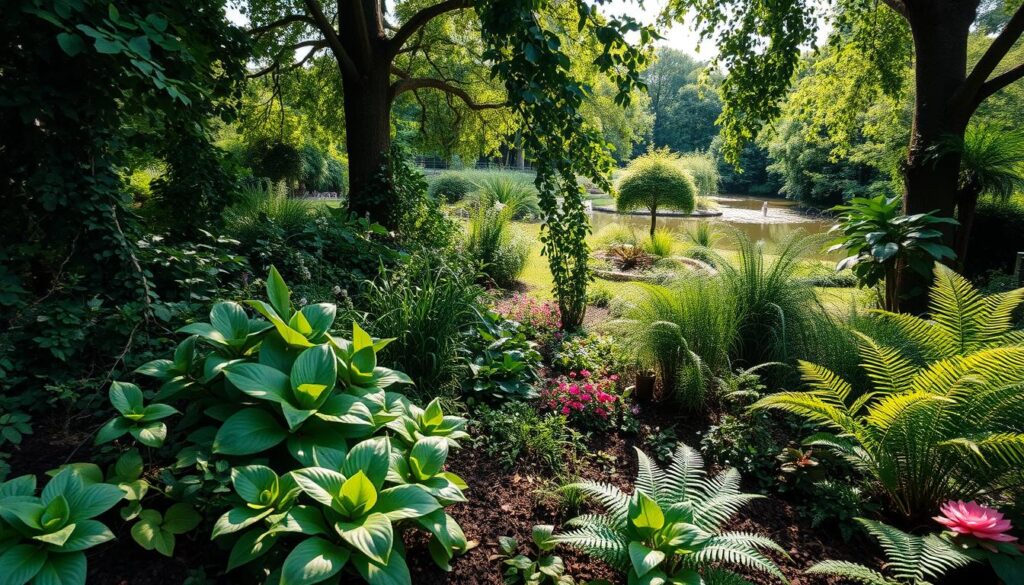
Top Companion Plants for the Cast Iron Plant
When considering the top companion plants for cast iron plants, several options stand out due to their compatibility and shared care requirements. These plants not only enhance the overall health and appearance of your green space but also thrive together under similar conditions.
Snake Plant (Sansevieria)
The snake plant is renowned for its striking upright leaves and low maintenance needs. It thrives in similar lighting conditions to the cast iron plant, making it one of the best plants to grow with cast iron plants. Additionally, the snake plant can help purify the air, providing a healthier environment.
Pothos (Epipremnum aureum)
Pothos is a vibrant and adaptable plant that enhances soil health. When paired with the cast iron plant, it helps maintain moisture levels without overcrowding. This complementing nature makes pothos a valuable companion in any indoor setting, showcasing the best plants to grow with cast iron plants.
ZZ Plant (Zamioculcas zamiifolia)
Known for its glossy leaves, the ZZ plant flourishes in low light and requires minimal care. Its resilience makes it an ideal companion for the cast iron plant, creating a visually appealing display while sharing similar watering needs. The ZZ plant exemplifies one of the top companion plants for cast iron plants.
Philodendron
Philodendron varieties are versatile and adaptable, providing a lush backdrop to your cast iron plant. They enjoy similar humidity levels and can tolerate various light conditions. This makes philodendrons a smart choice when thinking about the best plants to grow with cast iron plants. Pairing these greenery options results in a thriving indoor garden.
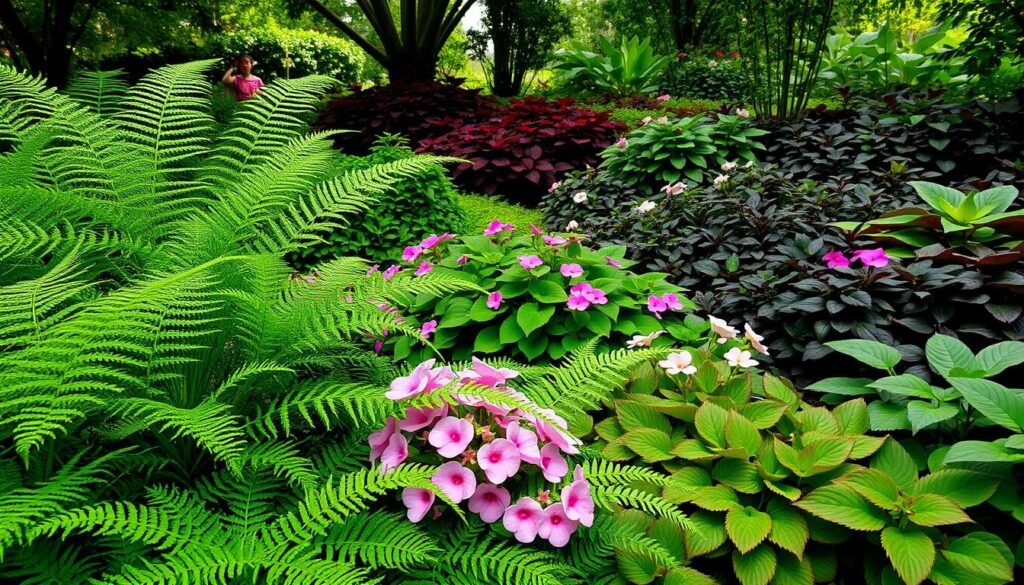
| Companion Plant | Light Needs | Watering Frequency | Benefits |
|---|---|---|---|
| Snake Plant | Low to bright indirect | Every 2-6 weeks | Air purification |
| Pothos | Low to bright indirect | Every 1-2 weeks | Soil health improvement |
| ZZ Plant | Low light | Every 2-3 weeks | Low maintenance, drought tolerant |
| Philodendron | Medium to bright indirect | Every 1-2 weeks | Lush foliage, humidity-loving |
Assessing Compatibility with Other Plants
When it comes to assessing compatibility of plants, understanding the dynamics between different species is crucial. Each plant has unique growth patterns, nutrient needs, and spatial requirements. For the cast iron plant, which is known for its resilience and slow growth, choosing companions with similar characteristics can create a harmonious garden ecosystem.
Growth Rates and Patterns
Growth patterns for companion plants play a significant role in their compatibility. The cast iron plant typically exhibits slow growth, making it essential to pair it with other plants that do not outpace it. Fast-growing plants can overshadow or compete for resources, leading to stress for the cast iron plant. Selecting companions with similar growth rates ensures that each plant has enough room to thrive without interference.
Nutrient Needs
An integral part of assessing compatibility involves understanding the nutrient needs for cast iron plant companions. These plants prefer well-draining soil and moderate feeding, which can be easily managed when companion plants share similar requirements. This alignment prevents competition for essential nutrients, promoting a healthier and more balanced environment for you to enjoy.
Space Considerations
Space is another factor that should not be overlooked. Proper spacing is necessary to avoid overcrowding, which can stunt the growth of your plants. When planning your garden, consider the mature size of each plant and ensure they have adequate space to flourish. Taking the time to assess compatibility regarding growth rates, nutrient needs, and space will lead to a beautiful and thriving green area.
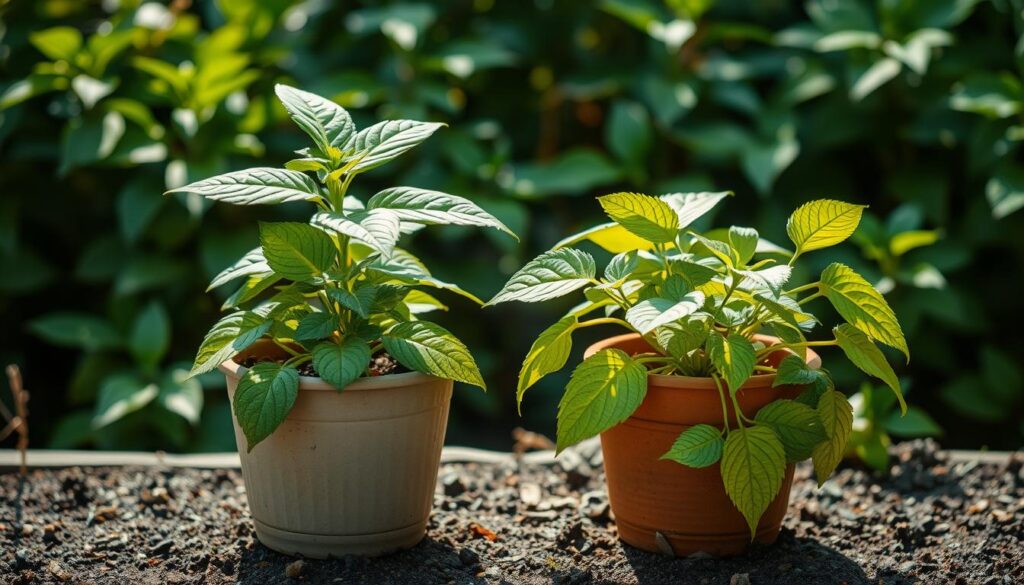
How to Arrange Companion Plants
Arranging companion plants effectively enriches your garden’s visual appeal and enhances plant health. Implementing various visual grouping techniques will allow you to create a harmonious layout that showcases the unique characteristics of each plant. Pay attention to seasonal considerations for plant arrangement, as this can significantly affect the vibrancy and overall aesthetic throughout the year.
Visual Grouping Techniques
Utilize color palettes and contrasting shapes when arranging companion plants. Grouping plants with similar needs in terms of water and light ensures they thrive together. Consider placing the cast iron plant at the center, surrounded by lower-growing varieties. This combination creates an eye-catching layout that emphasizes both depth and texture.
Height and Texture Variation
Incorporating varying heights and textures maintains interest within your garden. Position taller plants behind shorter ones, allowing their foliage to cascade over the edges. The broad leaves of the cast iron plant make it an excellent backdrop for delicate, trailing varieties, enhancing the overall visual contrast.
Seasonal Considerations
Always consider how seasonal factors influence your plant choices. Some plants exhibit vibrant colors in spring and summer, while others may provide structure and texture in fall and winter. By being mindful of seasonal variations, you can select companion plants that will keep your garden lively all year round.
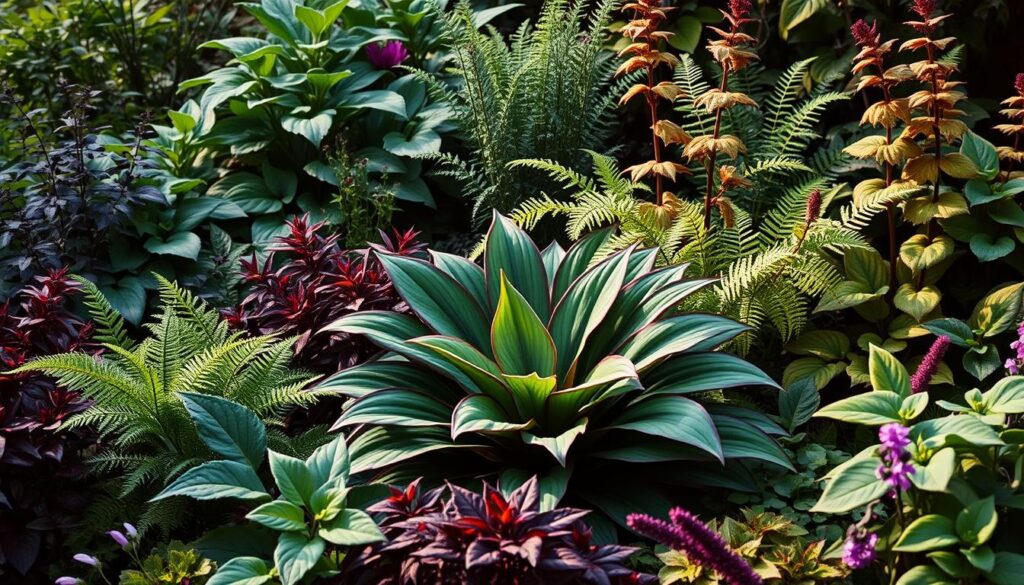
Common Mistakes to Avoid
When engaging in companion planting, it’s vital to be aware of common mistakes that can derail your gardening efforts. Many enthusiasts face overcrowding issues, which can lead to unhealthy plant interactions. Proper understanding of plant needs for cast iron plant companions is essential to creating a thriving garden. Neglecting these critical elements may inhibit growth and prevent your garden from reaching its full potential.
Overcrowding Companion Plants
Overcrowding can create fierce competition among plants for essential nutrients, light, and water. When companion plants are too close together, they may struggle to thrive. This can lead to stunted growth, reduced yields, and increased susceptibility to diseases. It’s crucial to allow adequate spacing to maintain healthy airflow and prevent overcrowding issues.
Ignoring Plant Needs
Each plant has unique requirements regarding soil, light, and water. Ignoring the plant needs for cast iron plant companions can have a detrimental effect. For instance, some companions prefer bright, indirect light while others thrive in low-light conditions. Assessing these needs before planting helps ensure a harmonious garden environment, supporting the well-being of every plant.
Poor Soil Choices
The type of soil you choose greatly impacts the success of companion planting. Poor soil choices can lead to nutritional deficiencies that hinder growth and health. Selecting the right soil mix tailored to the specific requirements of your plants can provide a solid foundation for vibrant and flourishing companions.
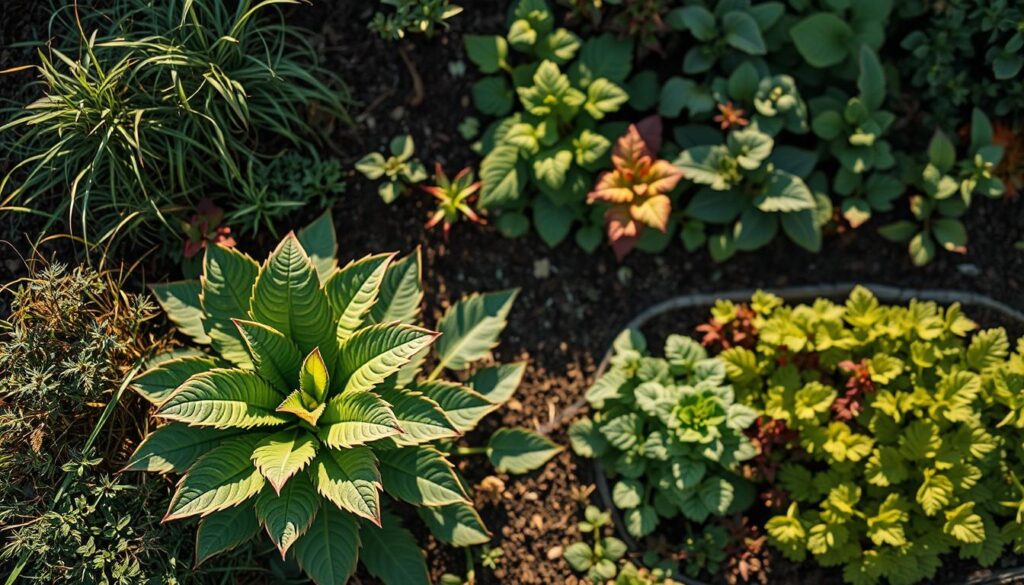
| Mistake | Impact on Garden | Prevention Tips |
|---|---|---|
| Overcrowding | Stunted growth and competition for resources | Maintain proper spacing between plants |
| Ignoring plant needs | Poor health and reduced growth | Research specific light and water requirements |
| Poor soil choices | Nutritional deficiencies | Use quality soil tailored to companion plants |
Care Tips for Companion Plants
Maintaining healthy companion plants requires a few essential practices. Focusing on consistent watering and pruning ensures that your plants not only thrive but flourish together. While addressing nutrient needs, organic fertilizers enhance the growing environment without harmful chemicals. Employing effective organic pest management techniques promotes a balanced ecosystem and reduces the risk of infestations.
Regular Watering and Pruning
Consistent watering and pruning are vital to ensure your companion plants remain vigorous. Most plants appreciate a regular watering schedule to keep the soil moist but not waterlogged. Pruning helps maintain their shape and encourages new growth. Make sure to remove any dead or yellowing leaves to prevent disease spread.
Fertilization Techniques
Using organic fertilizers during the growing season nourishes your plants without the adverse effects of synthetic options. Compost, vermicompost, and fish emulsion are excellent choices that improve soil health, providing essential nutrients for your companion plants. Apply fertilizers based on the specific needs of the plants in your garden for optimal results.
Managing Pests Organically
For organic pest management, consider natural remedies such as neem oil, which effectively targets a broad spectrum of pests. Regularly inspect your plants for any signs of pests and treat them promptly to avoid infestations. Introducing beneficial insects, like ladybugs, can also help control pest populations and maintain a healthy garden environment.
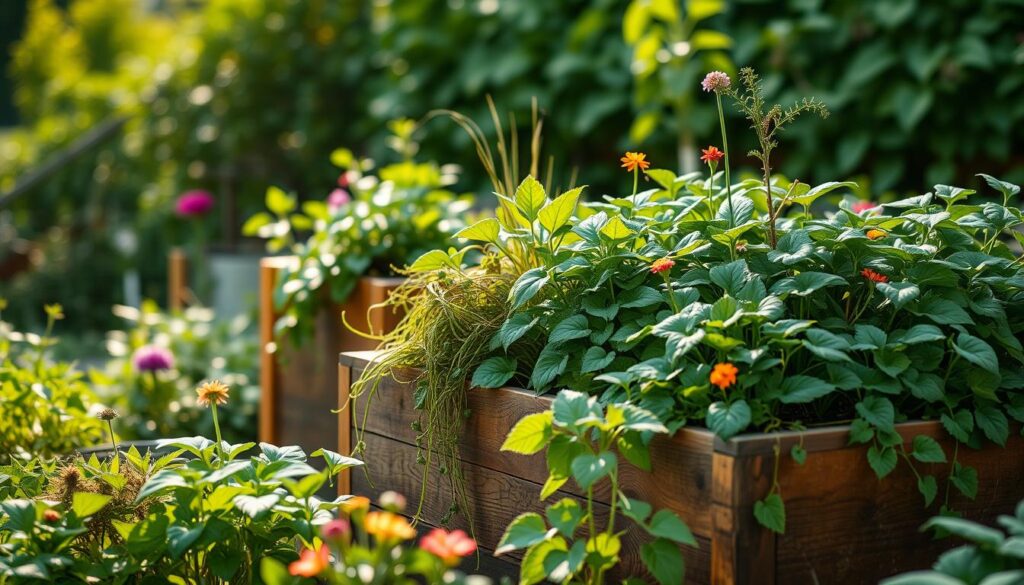
| Care Aspect | Tips |
|---|---|
| Watering | Water regularly, ensuring soil is moist but not soggy. |
| Pruning | Remove dead leaves and trim plants to encourage growth. |
| Fertilization | Use organic fertilizers like compost and fish emulsion. |
| Pest Management | Apply neem oil and introduce beneficial insects. |
Seasonal Companion Plant Pairings
Seasonal companion planting allows you to maximize the benefits of your garden by choosing the right plants for each time of year. As you explore spring planting suggestions, consider how they can enhance growth and vitality. Summer choices for companion plants can create a vibrant display, while fall and winter combinations help maintain interest even during colder months.
Spring Planting Suggestions
In spring, your garden can come alive with colors and textures. Some ideal companion plants include:
- Marigolds, which repel pests and attract beneficial insects.
- Snapdragons, adding height and colors that complement other plants.
- Basil, promoting health for nearby tomatoes and offering a fragrant addition.
Summer Choices for Vibrancy
Summer brings opportunities for bold colors and lush foliage. Some excellent companion plant options are:
- Fuchsias, providing striking colors amidst green foliage.
- Petunias, known for their ability to thrive in warmer weather.
- Zinnias, perfect for attracting pollinators with their vibrant blooms.
Fall and Winter Combinations
Even in fall and winter, it’s possible to create visually appealing arrangements. Consider these plants:
- Kale, which offers rich color during the colder months.
- Pansies, which can bring a splash of color to dull winter landscapes.
- Evergreens, ensuring your garden remains structured and attractive throughout the year.
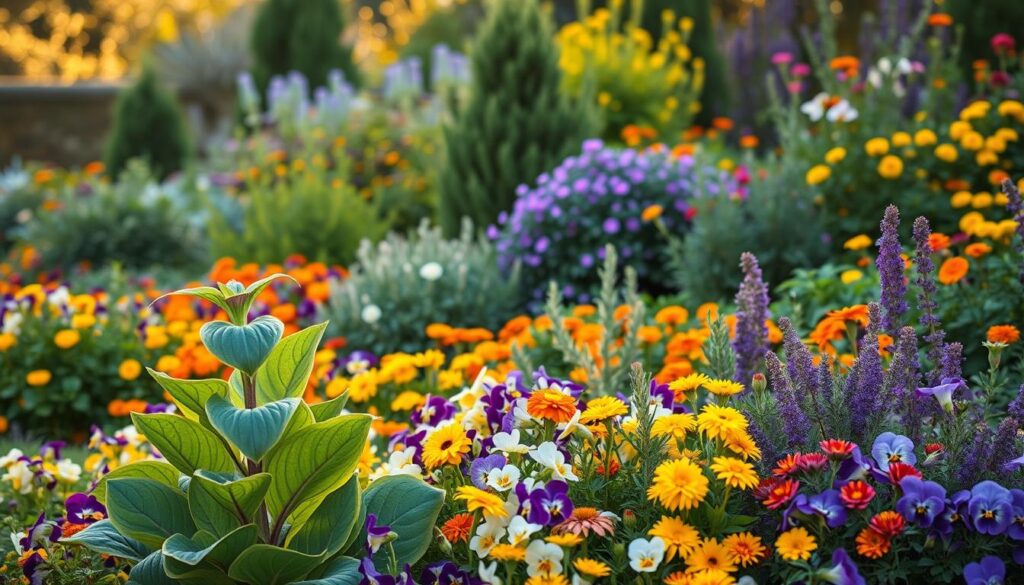
DIY Companion Planting Projects
Exploring DIY companion planting projects can transform your gardening experience. Engaging in container gardening ideas allows you to thoughtfully arrange companion plants alongside your cast iron plant. Vertical gardening concepts effectively maximize your gardening space, especially if you’re limited on square footage. Alongside that, utilizing indoor spaces creatively can enhance your home while ensuring optimal sunlight exposure and greenery in your environment.
Container Gardening Ideas
Container gardening offers versatility and creativity. You can mix various companion plants in individual pots to create a stunning display. Choose pots that complement each other while allowing ample space for roots to grow. Select compatible plants in terms of light and watering needs to ensure a thriving garden.
Vertical Gardening Concepts
Incorporate vertical gardening concepts to make the most of limited space. This approach not only improves aesthetics but maximizes productivity. Using trellises or wall-mounted planters, arrange your companion plants vertically for a vibrant and lush environment. This method can yield healthy plants while saving valuable ground space.
Using Indoor Spaces Effectively
Transform your indoor spaces into blooming havens with thoughtful companion planting. Position your cast iron plant in a well-lit area and surround it with shade-loving plants like ferns and pothos. This setup enhances the ambiance and keeps your indoor air fresh and vibrant.

Companion Plants to Avoid
When it comes to companion planting for your cast iron plant, understanding which plants to avoid is essential. Some companions may have conflicting growth habits, leading to competition for essential resources. Choosing the wrong plant can introduce a risk of disease or limit the growth potential of your cast iron plant.
Incompatible Growth Habits
Plants to avoid as cast iron companions often include those that outgrow or overshadow your cast iron plant. For example, plants that grow too tall or spread aggressively can hinder your cast iron plant’s access to light and nutrients. Ensuring that your companions have compatible growth habits can significantly enhance the health and vigor of all plants involved.
Risk of Disease Spread
Certain nearby plants can pose a serious risk of disease, compromising your cast iron plant’s health. Fungal infections, pests, and other maladies can easily transmit through close proximity. By familiarizing yourself with susceptible plants, you can make informed decisions that promote a healthier growing environment.
Aggressive Growth Patterns
Avoiding aggressive growers is crucial when selecting companion plants. Plants that mature quickly can monopolize resources, leaving your cast iron plant struggling to thrive. Such plants not only compete but can also stunt the growth of your prized cast iron plant, taking away its chance to flourish.
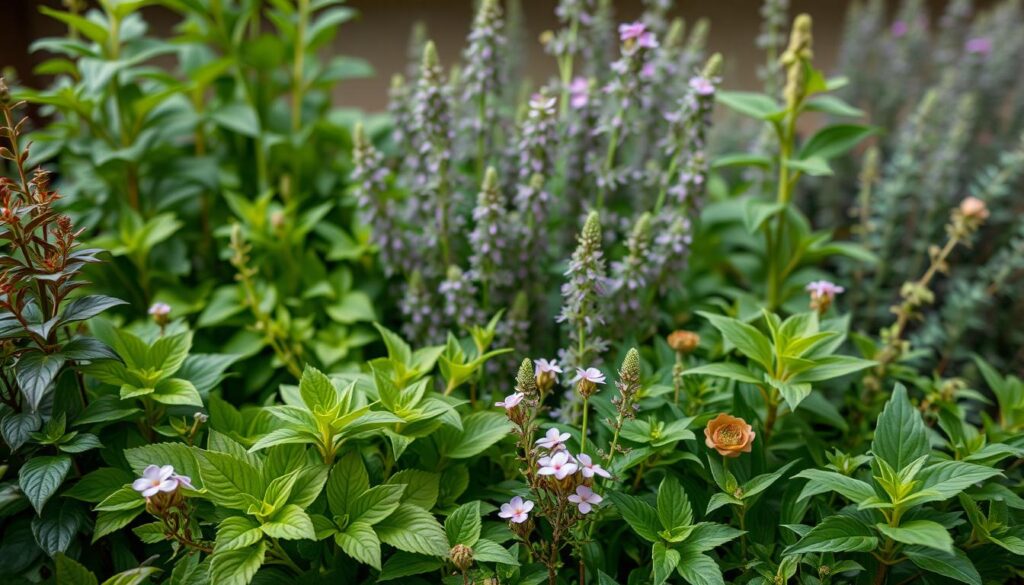
Signs of Unhealthy Companion Relationships
Recognizing the signs of unhealthy plant relationships is essential for maintaining a thriving garden. Stunted growth in plants can serve as an early warning signal of underlying issues. Similarly, the appearance of yellowing leaves may indicate stress due to competition or unsuitable environmental conditions. Monitoring these symptoms can help you address potential problems before they escalate, ensuring a healthier ecosystem for your plants.
Stunted Growth
Stunted growth in plants often signifies that something is amiss. If you notice that your companion plants are not reaching their expected height or size, it may be due to poor soil quality or an imbalance in nutrient availability. Competing for resources can hinder growth, making it important to regularly assess the needs of each plant.
Yellowing Leaves
Yellowing leaves might be another indication of stress. This condition typically arises due to inadequate light, improper watering habits, or nutrient deficiencies. Adjusting care routines and optimizing the environment can help combat this issue, ensuring that your plants receive the best chance to thrive.
Pest Infestation Issues
Pest issues in companion planting can emerge when plants are stressed, making them more susceptible to infestations. A weakened plant can attract pests, leading to further decline in health. Regular inspections of your plants can help catch early signs of pests, allowing you to implement preventive measures or treatments as needed.
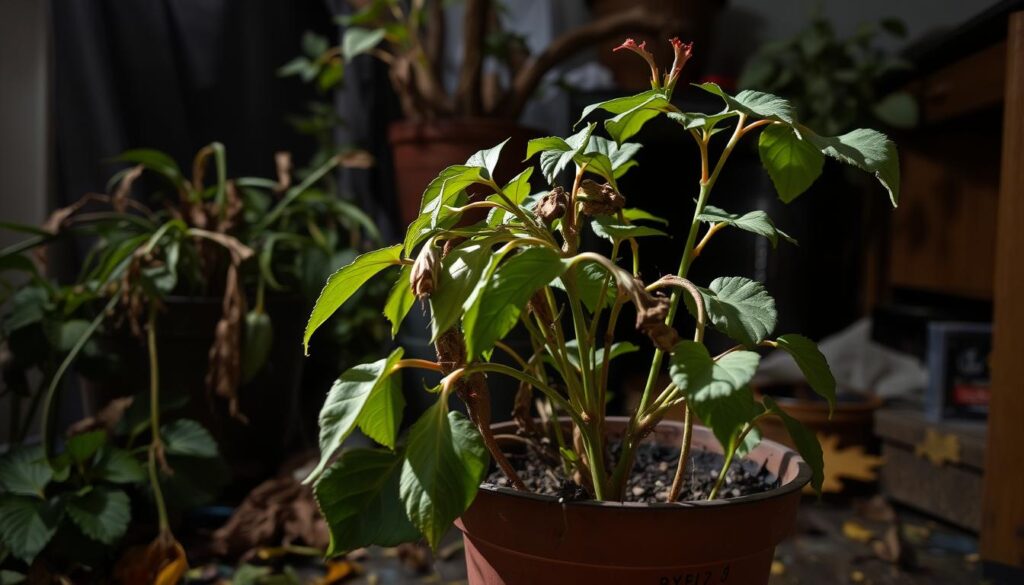
| Symptoms | Potential Causes | Recommended Actions |
|---|---|---|
| Stunted Growth | Poor soil quality, nutrient imbalance | Soil testing, amend with fertilizers |
| Yellowing Leaves | Inadequate light, nutrient deficiencies | Adjust lighting, ensure proper fertilization |
| Pest Infestations | Plant stress, weakened defenses | Implement pest control measures, natural predators |
Resources for Further Learning
To enhance your gardening skills, especially in companion planting, you can explore several valuable resources. The variety of tools available caters to different learning styles, making this knowledge accessible for everyone.
Books on Companion Planting
Diving into books on gardening can provide you with detailed guidance on companion planting techniques. Some recommended titles include the *Companion Planting for Beginners* and *Carrots Love Tomatoes*. These books break down the principles of companion planting and offer practical tips to get you started.
Online Gardening Communities
Engaging with online gardening communities can significantly enrich your knowledge. Websites and forums such as GardenWeb or Reddit’s gardening subreddit allow you to ask questions, share experiences, and gain insights from fellow gardening enthusiasts. These interactions often lead to discovering new resources for learning companion planting.
Local Gardening Clubs
Joining local gardening clubs can provide a hands-on learning experience. These clubs often host workshops and events, fostering connections with like-minded individuals. By participating, you can gather practical advice and explore various gardening methods that suit your environment and preferences.
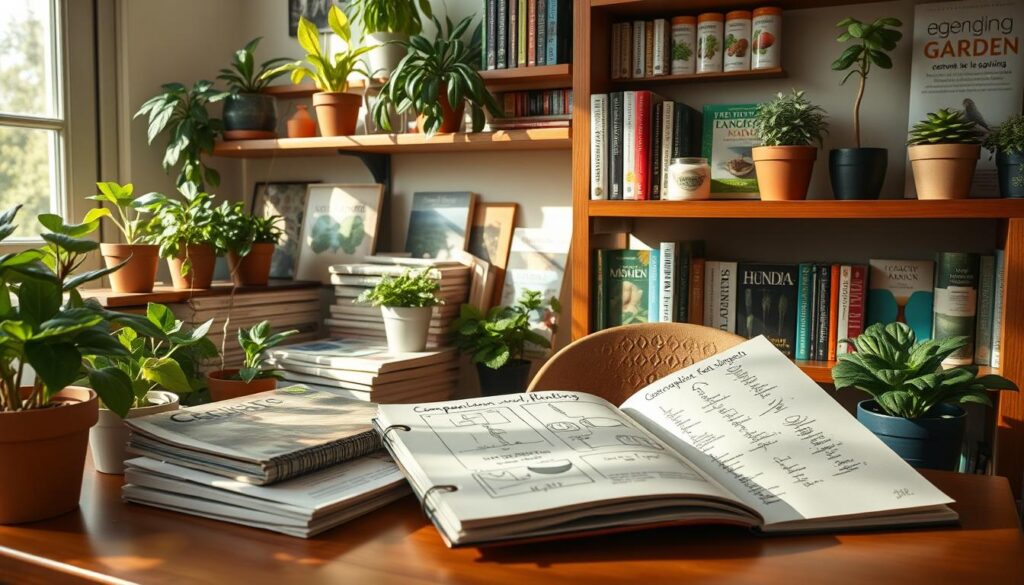
Using Companion Plants in Different Settings
Whether you are cultivating plants in the comfort of your home or in a sprawling garden, the benefits of using companion plants in different settings can significantly enhance your gardening experience. Understanding the nuances between indoor vs outdoor planting and tailoring your approach for urban or rural environments will maximize your results.
Indoor vs. Outdoor Companion Planting
When planting indoors, consider the limited light and space. Choosing compatible companions like the snake plant can optimize air purification and aesthetic appeal. For outdoor planting, leveraging larger spaces allows for a variety of configurations. Hardy plants such as the cast iron plant tolerate varying weather conditions, making them ideal for companion planting outdoors.
Urban Gardening Strategies
Urban gardening strategies demand creativity due to space constraints. Utilizing vertical gardens or container gardening can effectively incorporate companion plants. Options such as layering plants in a small area enhance growth, while also improving pest management. Consider incorporating herbs and flowering plants to attract beneficial insects while working within your limited footprint.
Rural Gardening Tips
In rural settings, the expansiveness allows for diverse plant pairings. You can leverage the benefits of companion planting on a larger scale by grouping plants to optimize sunlight exposure and soil nutrients. Implementing rows of compatible species provides not only aesthetic beauty but also promotes biodiversity and resilience in your garden ecosystem.

The Role of Companion Plants in Biodiversity
Companion plants play a significant role in biodiversity, directly supporting ecosystems around them. They contribute to a healthier garden environment through various interactions with other plants and organisms. Understanding their benefits can enhance your gardening practices while promoting a thriving ecosystem.
Supporting Local Ecosystems
Companion plants foster a diverse range of plant species which creates a balanced habitat, essential for many wildlife species. This diversity helps to attract pollinators such as bees and butterflies, which are vital for the reproduction of many flora. When you incorporate companion plants in your garden, you actively support local ecosystems that thrive on variety and interconnections.
Enhancing Soil Health
Healthy soil is the foundation of a prosperous garden. Companion planting aids in enhancing soil health through improved nutrient uptake and the addition of organic matter. Certain plants can fix nitrogen in the soil, providing essential nutrients for neighboring plants. By maintaining soil quality, you ensure a sustainable garden that contributes positively to biodiversity.
Attracting Beneficial Insects
Many companion plants are known for attracting beneficial insects, including natural predators of common garden pests. By creating a habitat that invites these helpful creatures, you reduce the need for chemical interventions. The role of companion plants in biodiversity is crucial for maintaining an organic balance and promoting the health of your garden.

| Benefit | Details |
|---|---|
| Supporting Ecosystems | Promotes biodiversity, attracting a variety of wildlife. |
| Soil Health | Improves nutrients and soil structure through organic matter. |
| Beneficial Insects | Encourages natural pest control by attracting helpful insects. |
Conclusion: Your Cast Iron Plant Journey
As you venture into the world of companion planting with your cast iron plant, it’s important to remember the key points discussed throughout this article. Pairing your cast iron plant with suitable companions like snake plants or pothos not only enhances the overall health and growth of your plants but also brings vibrancy and life to your space. The joys of gardening are found in these simple practices, leading to the creation of beautiful and thriving environments.
Don’t hesitate to embrace experimentation in your gardening journey. Trying out various companion plants, adjusting arrangements, and observing their interactions can provide you with invaluable insights. Each experience adds to your expertise, making you more attuned to the needs of your plants and the nuances of your garden. The exploration is part of what makes gardening rewarding and fulfilling.
Ultimately, the joy of gardening lies in watching your efforts bloom and knowing that you are fostering a beautiful ecosystem right in your home or yard. So dive into the roots of your cast iron plant journey, and let the process inspire you as you cultivate a lush, vibrant sanctuary. Your cast iron plant care adventure is not just a task; it’s a delightful experience waiting to unfold.
